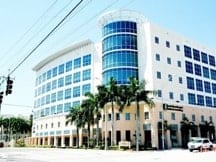Plantar Fasciitis
What is: One of the most common orthopedic complaints, plantar fasciitis causes pain in the bottom of the heel. The plantar fascia is a thick, web-like ligament that connects your heel to the front of your foot. It supports the arch of your foot and helps you walk. Your plantar fascia ligaments experience a lot of wear and tear in your daily life. These ligaments serve as shock absorbers to support the arch of the foot. Too much pressure on your feet can damage or tear the ligaments, causing the plantar fascia to inflame, resulting in heel pain and stiffness.
Causes: Overweight or obese people are highly susceptible to developing plantar fasciitis because of the increased pressure on your plantar fascia ligaments, especially if you rapidly gain weight. It is common for women who are pregnant to experience episodes of plantar fasciitis during the final phases of their pregnancy. Long-distance runners and people with highly active jobs that involve being on your feet often (factory workers, restaurant server, etc.) are highly prone to developing plantar fasciitis. Active men and women between the ages of 40 and 70 can also be affected by plantar fasciitis, with women developing it more often than men. Structural foot problems (high arches, flat feet, tight Achilles tendons, etc.) can also lead to plantar fasciitis. Additionally, shoes with poor soles and arch support is also a common contributor.
Sign & Symptoms: Pain on the bottom of the heel is the most common complaint of those with plantar fasciitis, with some experiencing pain at the bottom mid-foot area. This develops gradually over time, and usually affects just one foot but can affect both feet. Plantar fasciitis pain can range from dull to sharp. It’s possible to feel a burning/ache on the bottom of the foot extending outward from the heel. The pain is worst in the morning, or if you’ve been sitting or lying down for a while, and climbing stairs feels impossible from heel stiffness. After prolonged activity, the pain can flare up due to increased inflammation. Pain isn’t usually felt during the activity but rather just after stopping.
Diagnosis and Treatment: A physical exam to check for tenderness in your foot and the exact location of the pain is necessary to determine that they’re not the result of a different foot problem. Your doctor may ask you to flex your foot while they push on the plantar fascia to see if the pain gets worse as you flex and better as you point your toe, in addition to identifying mild redness or swelling.
Your doctor will evaluate the strength of your muscles and the health of your nerves by checking your:
- reflexes
- muscle tone
- sense of touch and sight
- coordination
- balance
An X-ray or an MRI scan may be necessary to check that nothing else is causing your heel pain, such as a bone fracture.
Recovery: If home treatments, over-the-counter, or anti-inflammatory drugs don’t ease the pain, an injection of a corticosteroid directly into the damaged section of the ligament can help by using an ultrasound device to help determine the best spot for the injection. Your doctor can also apply corticosteroids to the skin of your heel or the arch of your foot and apply a painless electrical current to let the steroid pass through your skin and into the muscle.
Physical therapy is a crucial aspect of treatment for plantar fasciitis. It can help stretch your plantar fascia and Achilles tendons. Exercises to strengthen your lower leg muscles can help stabilize your walk and lessen the workload on your plantar fascia.
Dr. Ray Lopez
Minimally Invasive Bunion Surgery

- Main Office:
- Miami Beach 400 Arthur
- Godfrey Road Suite #412
- Miami Beach, FL 33140

- South Miami
- 6200 Sunset Drive Suite #402
- South Miami, FL 33143

- Pembroke Pines
- 601 N. Flamingo Road
- Suite #101, Pembroke Pines, FL 33028

- Aventura
- 21000 NE 28th Ave.
- Suite #203, Aventura, FL 33180





